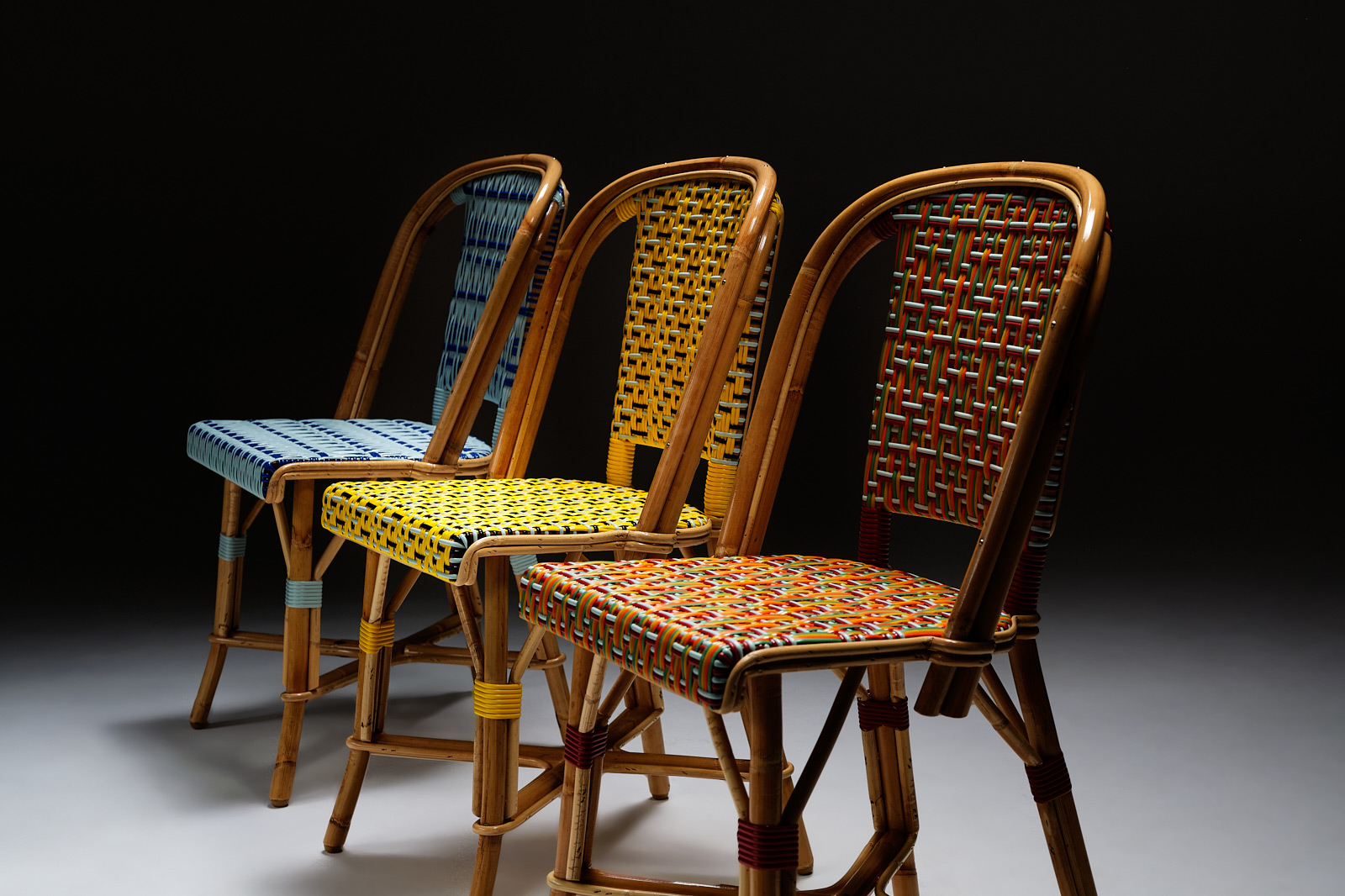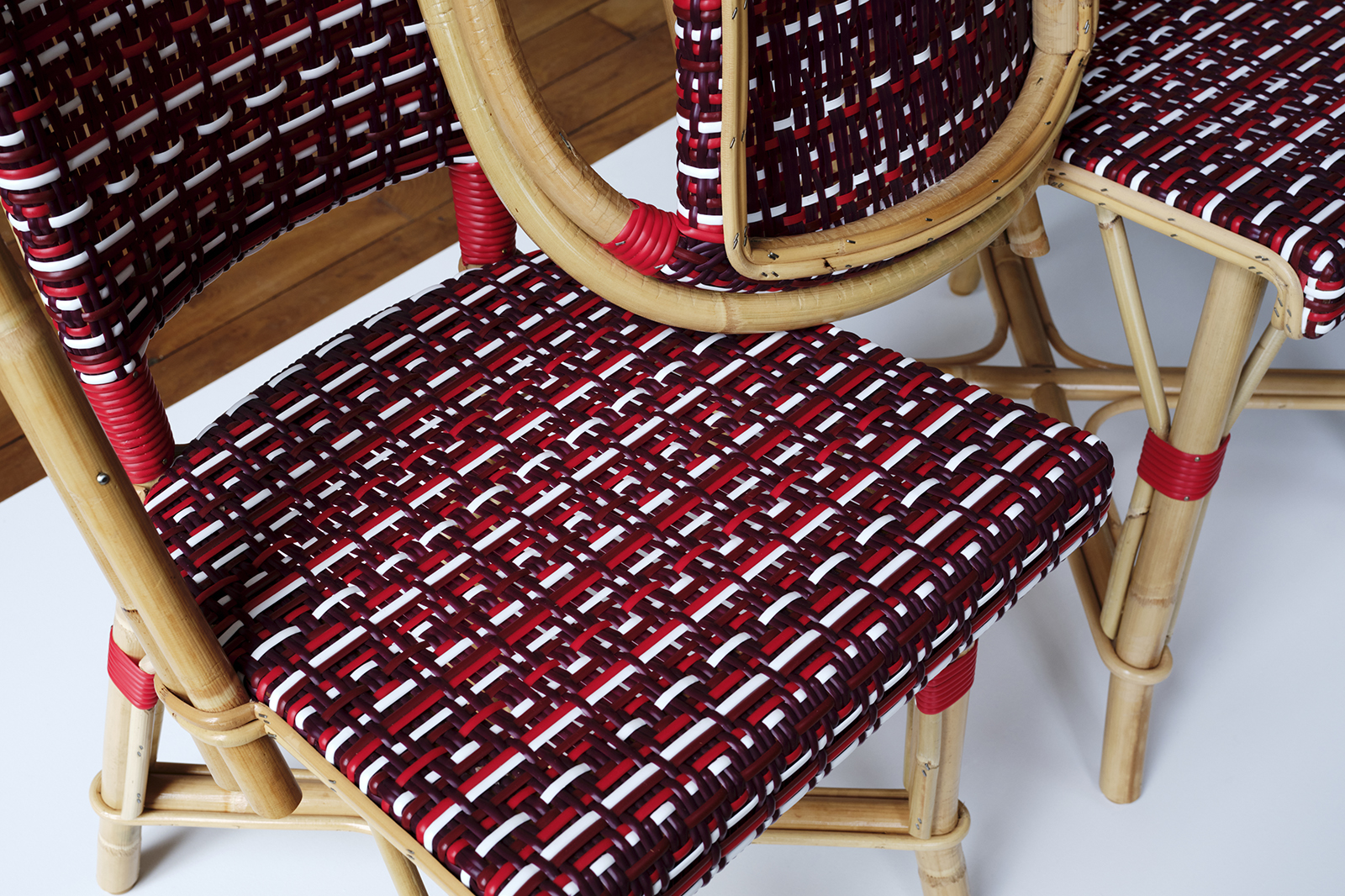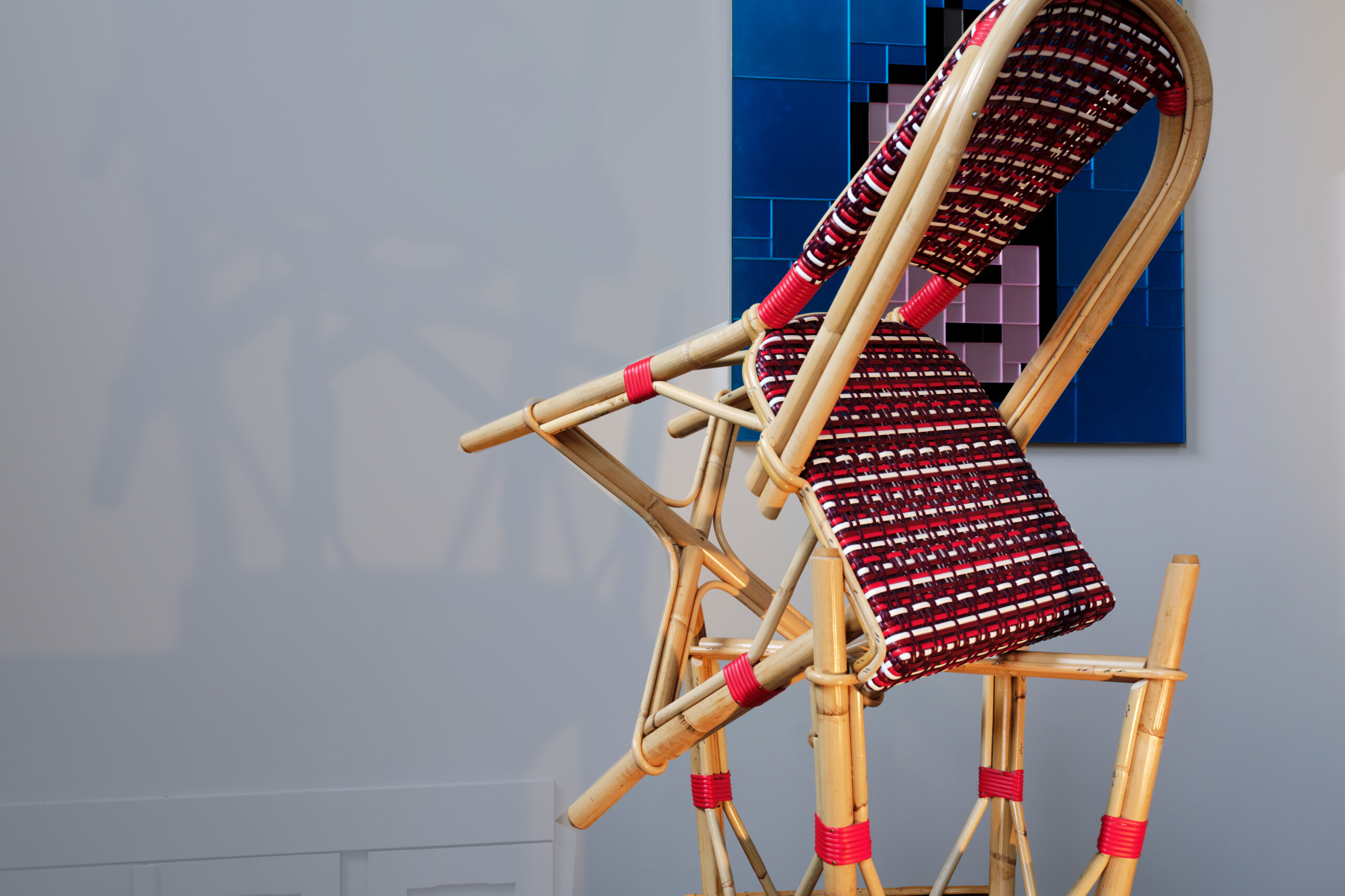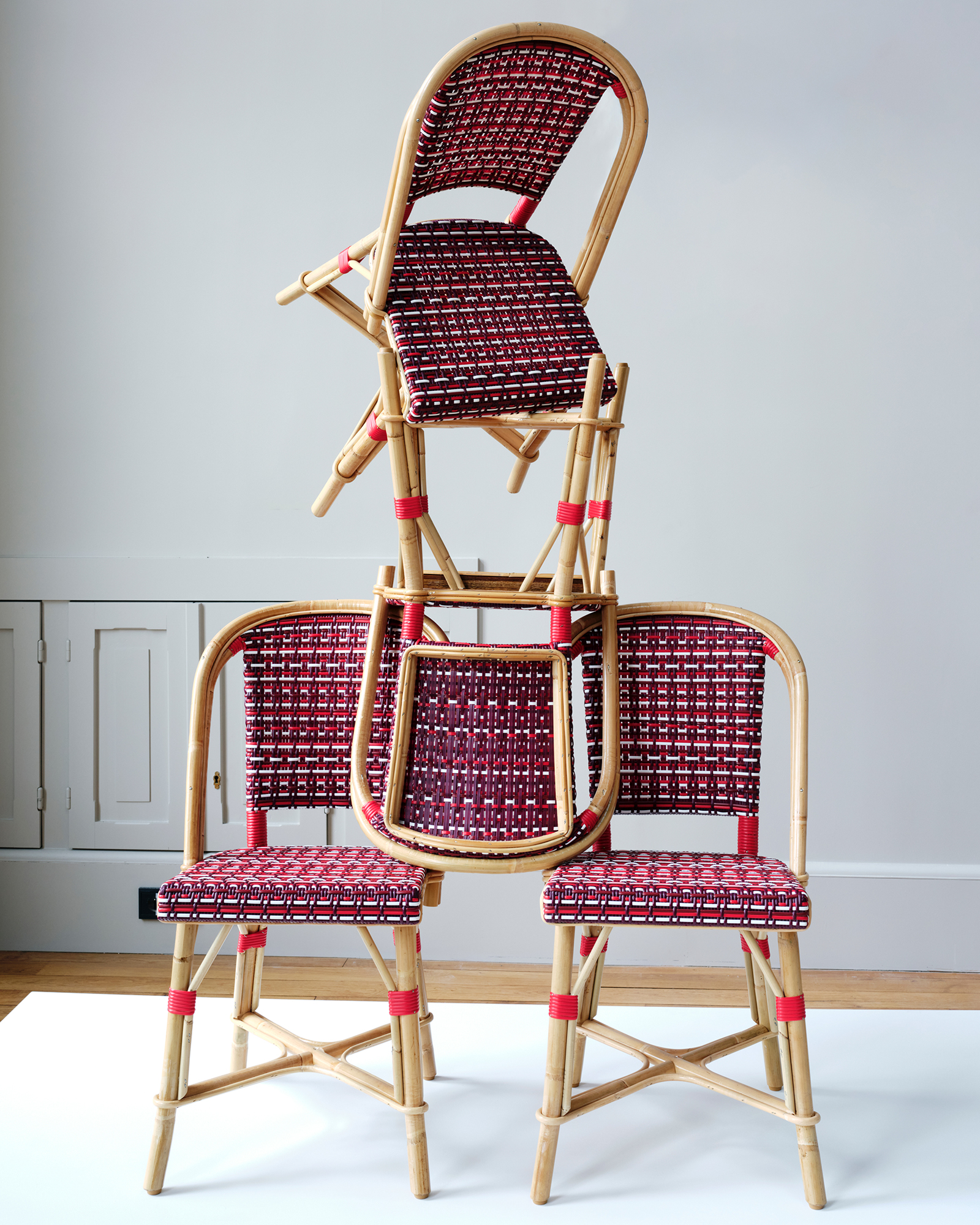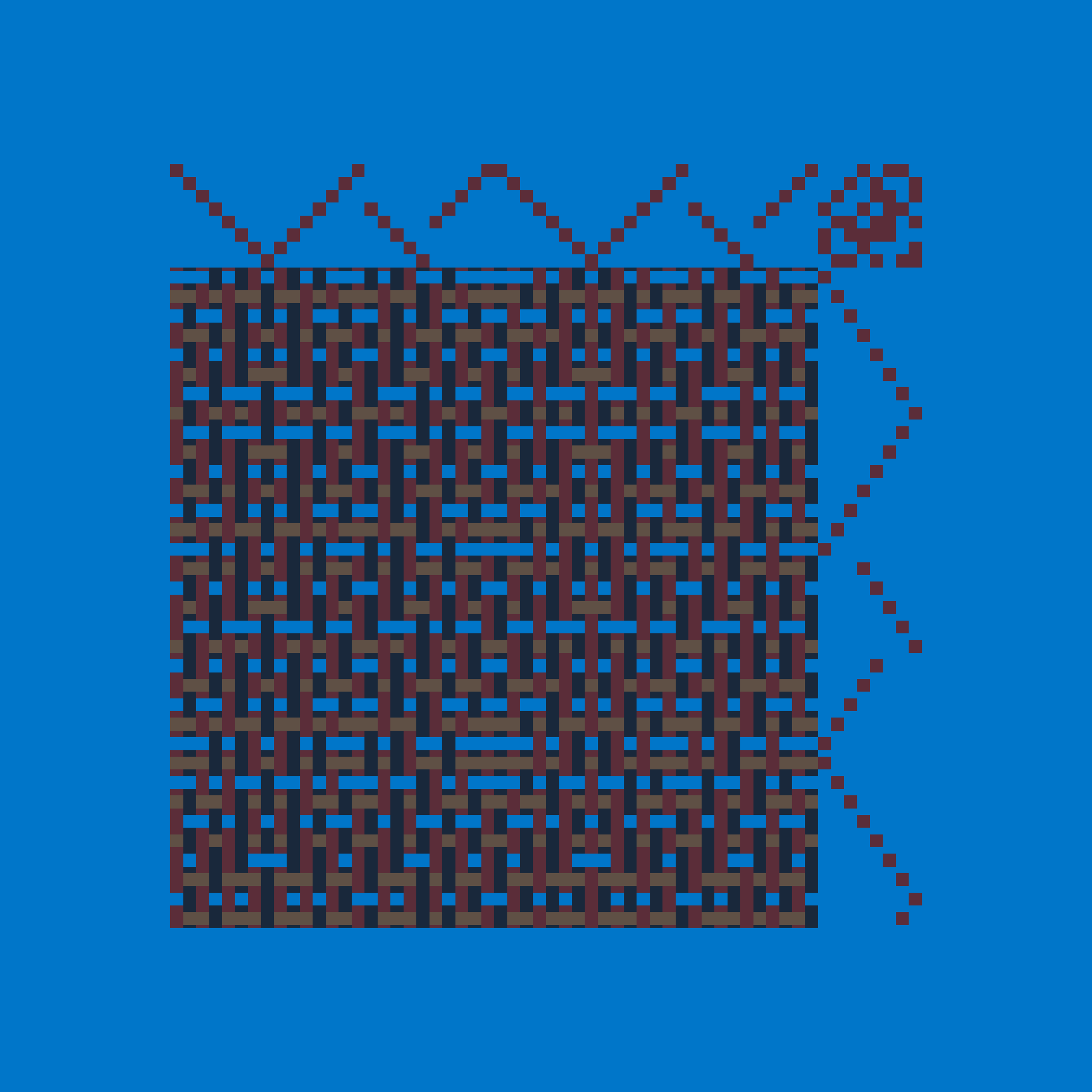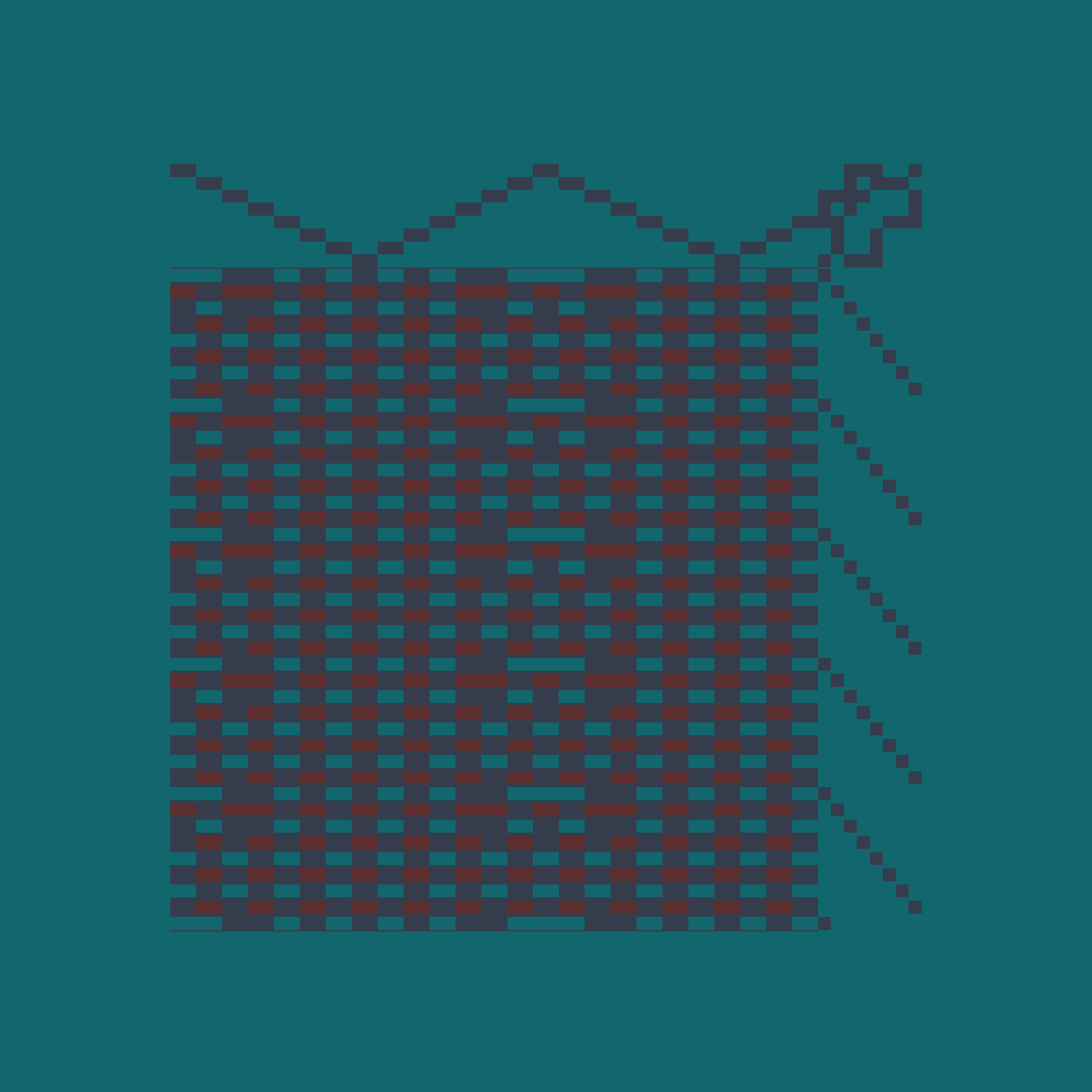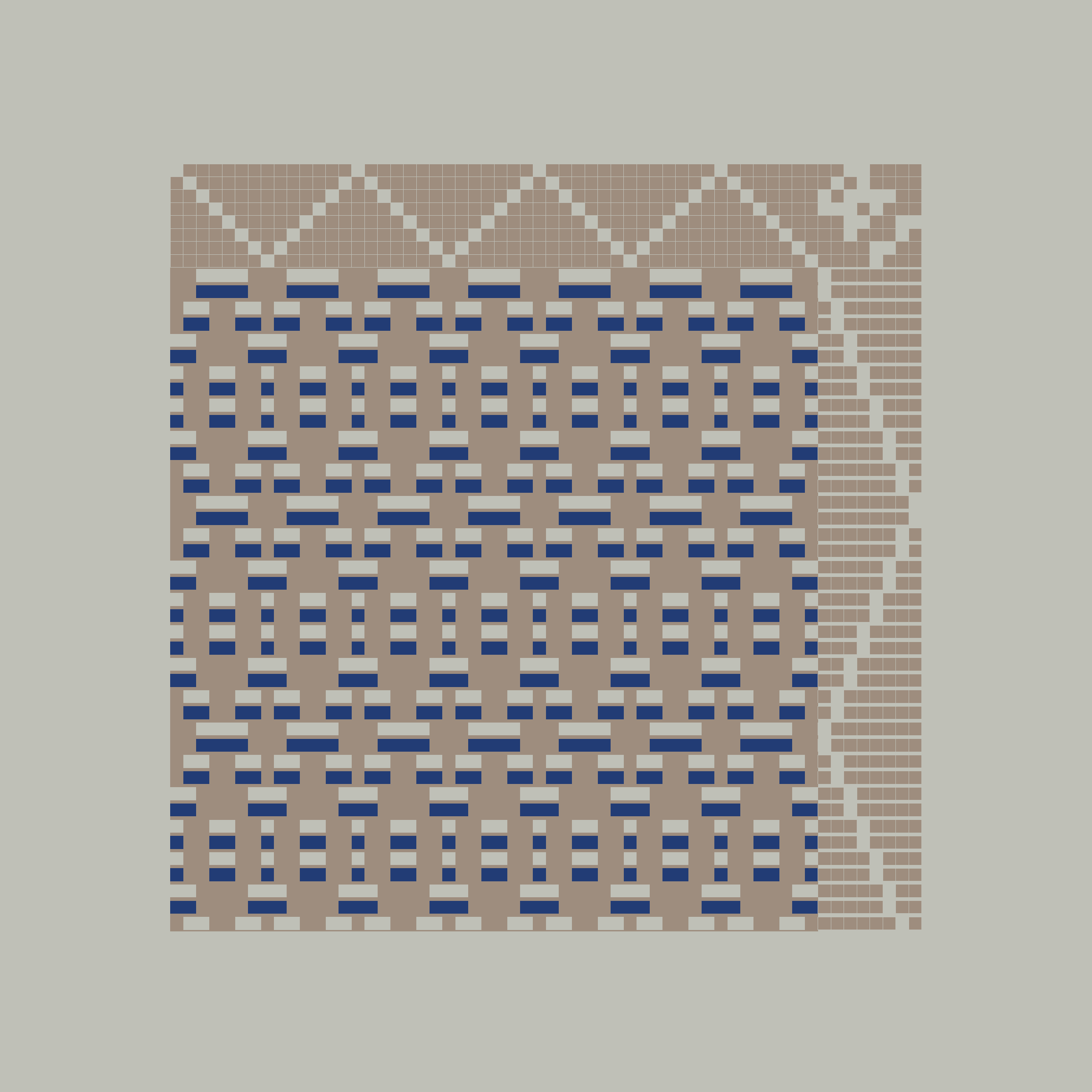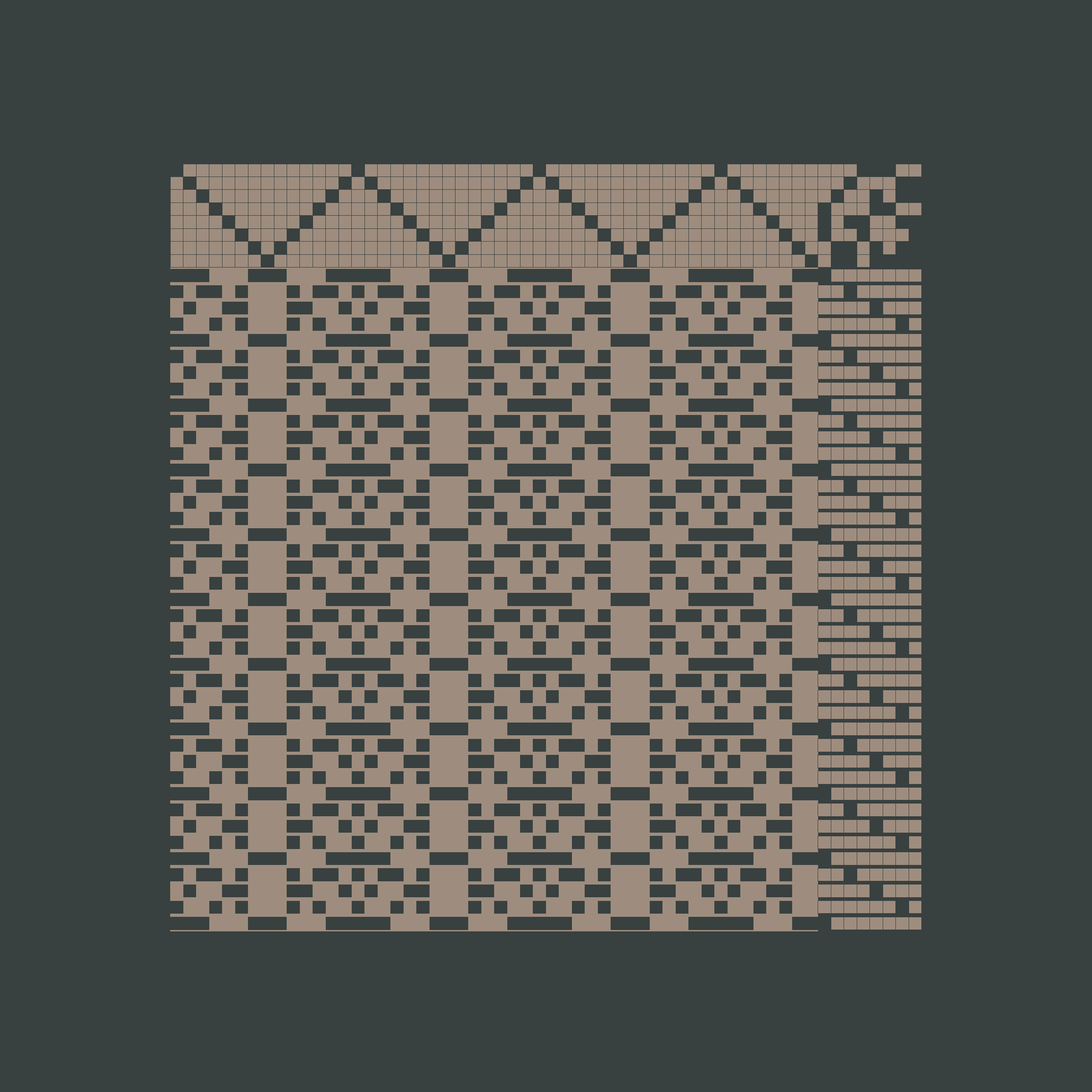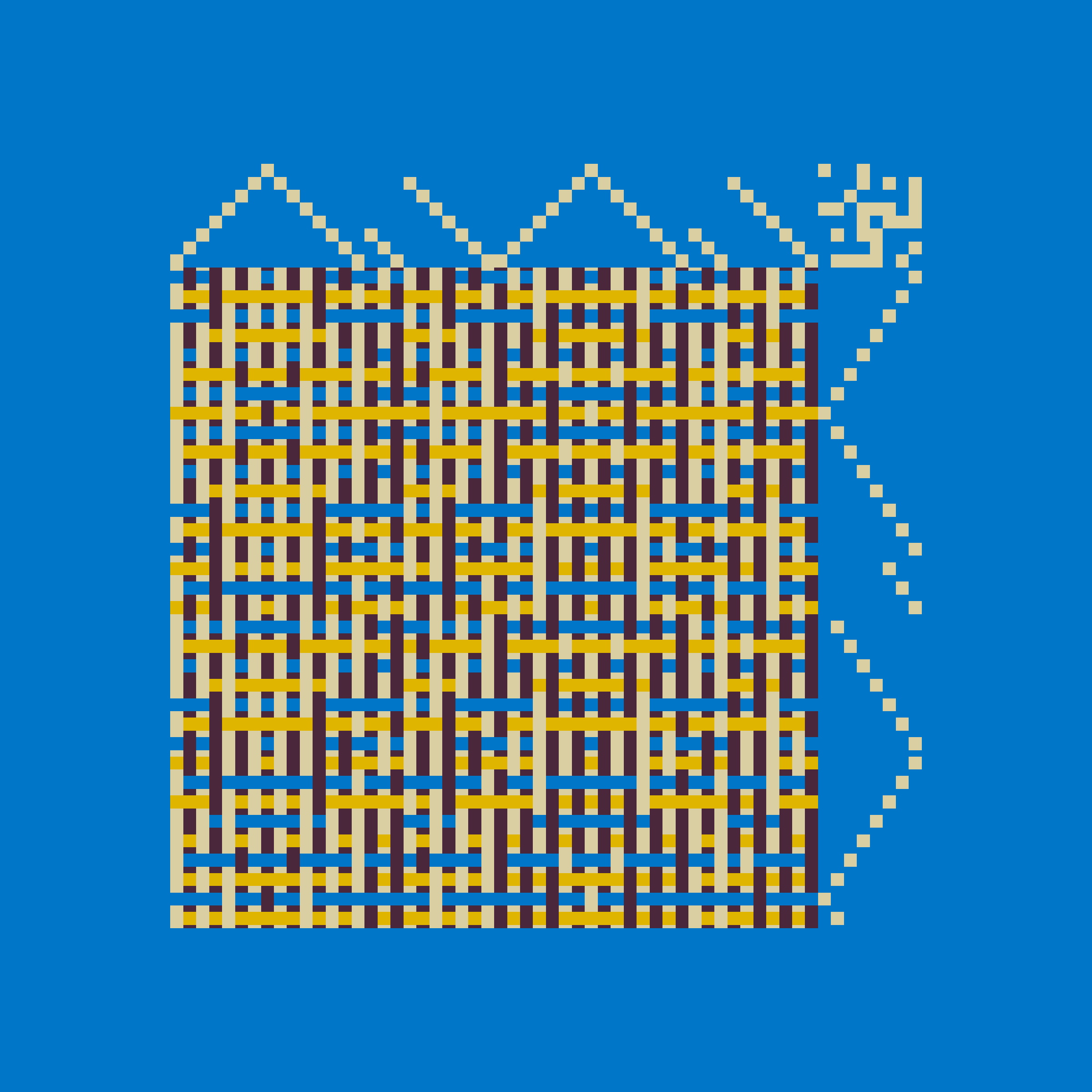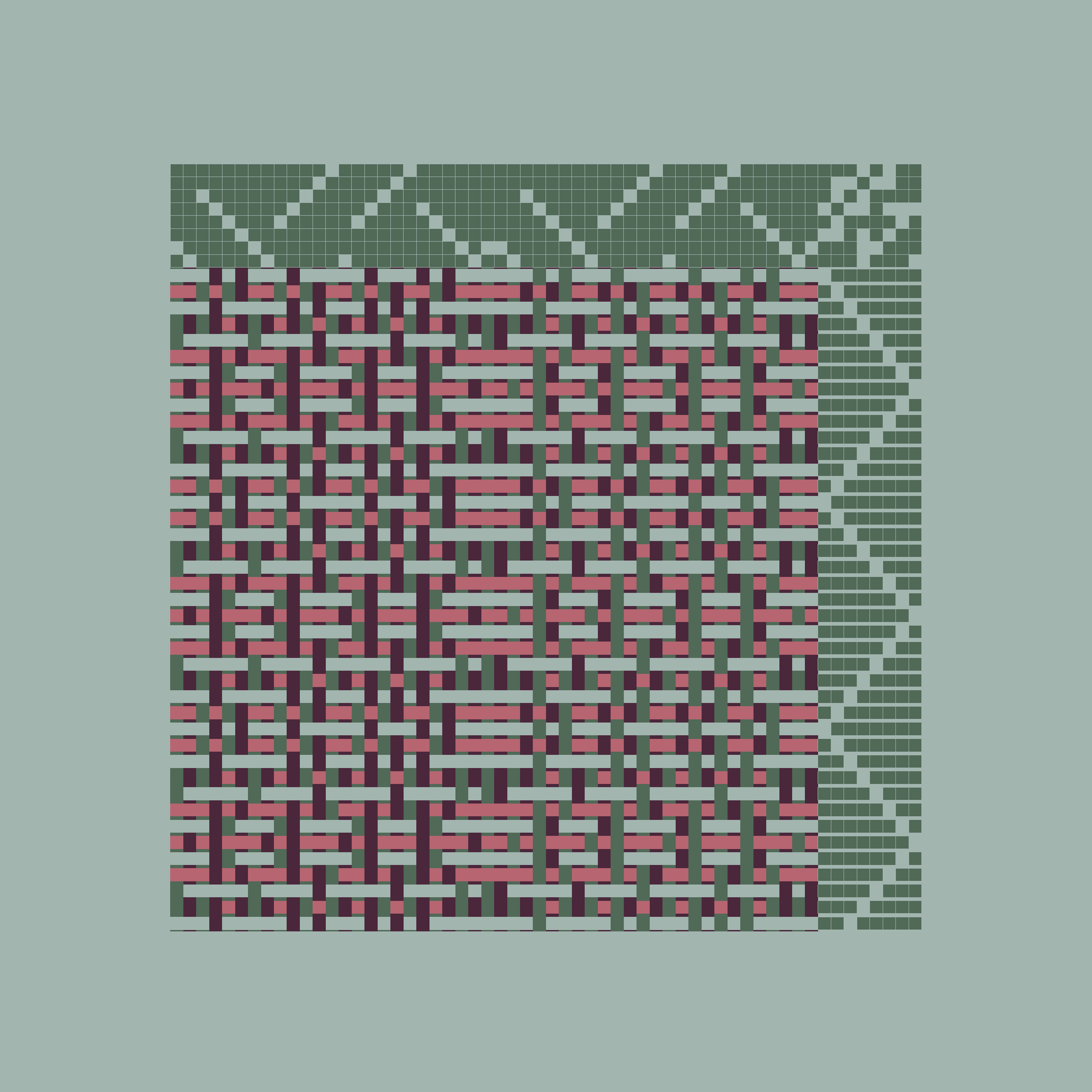This site uses cookies – More Information.
Enlace
Enlace is a work that connects algorithmic weaving with the traditional craft of weaving in cane. We are collaborating with Trame and Maison Louis Drucker to craft physical objects from the generative output. Each generative token can be used by the collector to redeem a unique chair or a woven canvas from Maison Louis Drucker, the historic Parisian chair manufacturer. Enlace was released as part of the Bright Moments Paris Collection on February 20, 2024. Production for redeeming token is limited to December 31st, 2024.
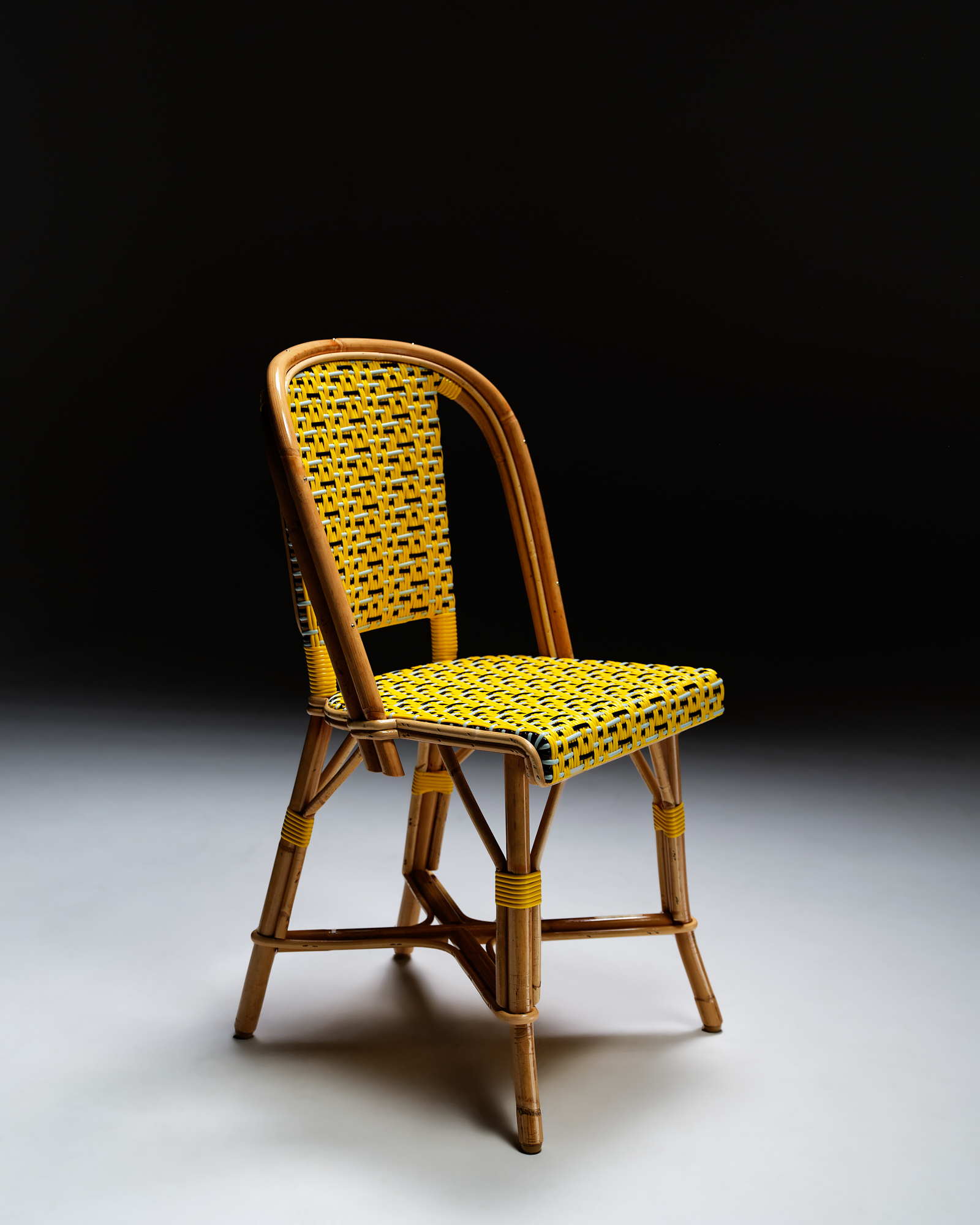


PHYSICALS BY TRAME & MAISON LOUIS DRUCKER
There are 100 digital outputs (or tokens) of Enlace. Each token can be used to redeem physical objects from Maison Drucker, a woven chair and/or woven canvas. There are no limitations on supply. Working in collaboration with Trame and Maision Drucker, the Enlace algorithm is customized to the weaving constraints of this historic house of craft. The “features” of the Enlace algorithm are in fact the physical weaving constraints to ensure viability with Maison Drucker’s in-house techniques. When token holders acquire a unique woven chair or woven canvas of their token weave, they can be assured that the weaving color, type, and material are Maison Drucker specifications.
For ordering chairs or woven canvases, please email info@trameparis.com.

This project is about bringing together the algorithmic and on-chain potential of the digital token with the time-honored craft of weaving in cane as exemplified by Maison Louis Drucker. Enlace uses digital tools to open a co-creative process with a historic house of craft. New technology and traditional craft are not in conflict. Enlace claims the opposite, that the deep and time-honored traditions of craft use generative processes as part of their making and heritage.
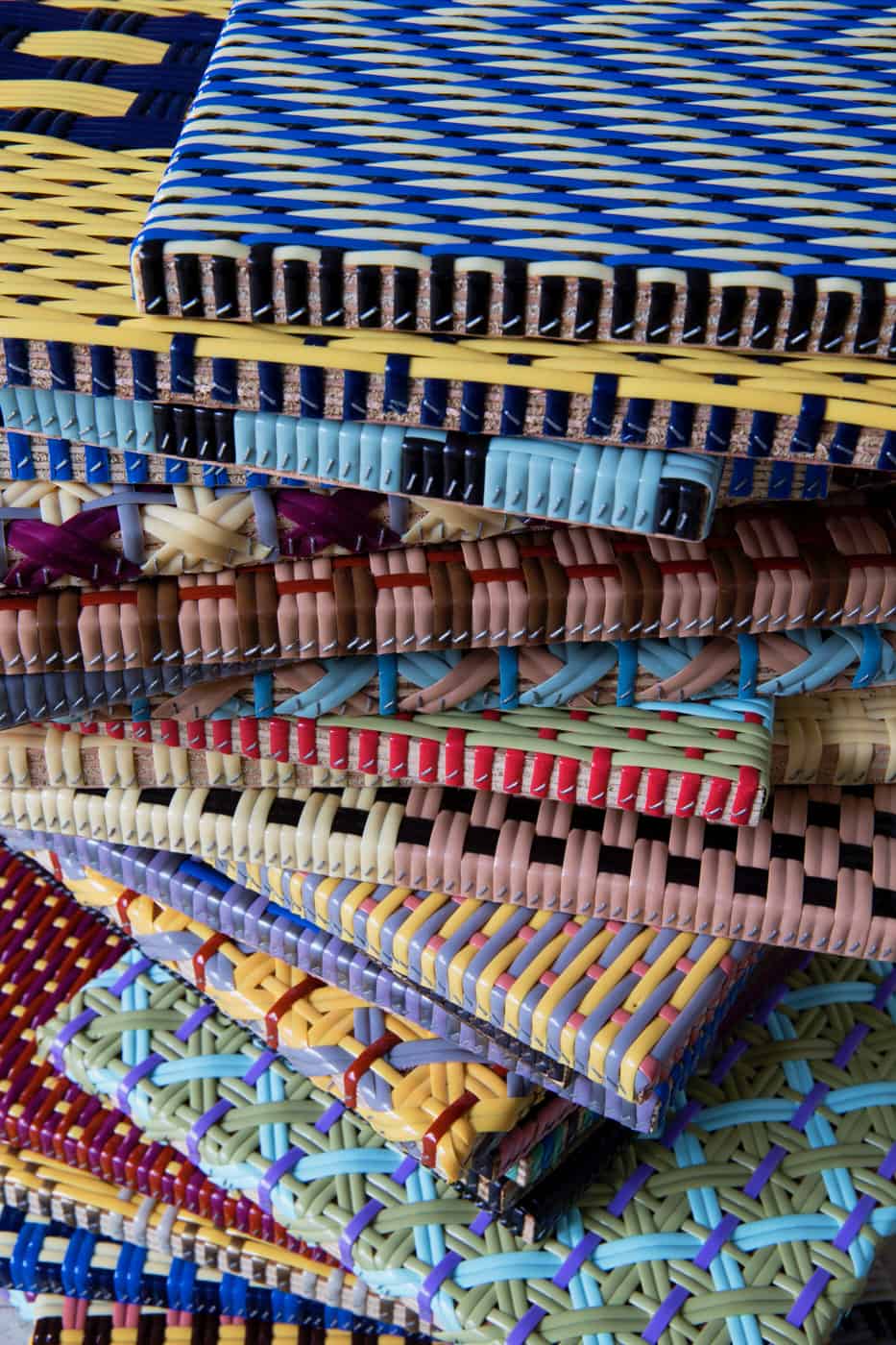
HERITAGE CRAFT
Enlace is an English and French word with subtle variations in meaning. “Enlace” in English refers to the act of linking or intertwining, both in physical and abstract senses, and often used to describe weaving in thread. In French, “enlace” translates to an embrace or hug, emphasizing the physical human connection. Both words come from the Latin root “laceare,” meaning “to entwine,” sharing the root idea of bringing separate things together.

WEAVING DRAFT
Enlace is visually expressed using the format of the weaving draft, a conventional template that conveys the minimal and necessary information for weavers to carry out a woven pattern, no matter its size and complexity. It is a graphic language to make a weave, one thread at a time. Visually, this project abstracts this language as the basis for novel generative outputs, altering its representation slightly from convention, while keeping its inherent utility intact. In other words, any weaver, human or machine, will know how to read Enlace as a set of weaving instructions. In this sense, Enlace is not about making a final product, but rather using the token as means to something else; the minimum instructions needed to make either a woven chair or woven canvas.

STRUCTURE OF THE WEAVING DRAFT
A weaving draft is recognizable by its characteristic four-part structure:
- Threading on the top row
- Treadling on the right column
- Tie-up pattern in the top right corner
- The resultant Weave in the main quadrant.
Weaving Drafts are a way communities of weavers can document, share, and disseminate their artistic work. Often the weaving draft is painstakingly rendered in an artistic manner to serve as very clear instructions and as a result, becomes a work of art in itself.
Enlace Mints

CAFE CHAIR HISTORY
Established in 1885, Maison Drucker created one of the iconic chair designs popularized in French cafes. As a choice for creating a physical weave from a digital token, the Maison Drucker cafe chair offers a unique history and perspective on the generative genre. It is an object that represents a moment of social and technological upheaval. First and foremost, weaving was translated into a mechanical device, the Jacquard Loom, widely referred to as the first computer. In this sense, weaving is a foundational digital language, a warp and weft, that would translate later into today’s computer using the transistor. Beyond its computational history, the café chair offers another insight into the contemporary moment. Originally made of steam-bent wood and woven cane, the classic cafe chair was an industrial feat of the late nineteenth century mass production. It led the way, long before Ford’s Model T, of displacing craftwork from the home and onto assembly line within a factory setting. The cafe chair symbolized a new technology and a new artistic culture, a piece of furniture synonymous with intellectual curiosity. No single object better represented the emergence of a new economic class, and indeed a new kind of society, than the café chair. It captured the ideals of urban life and mass production at once.

Aranda\Lasch
Every project at Aranda\Lasch looks to the material histories of the generative medium to create new work. Inspired by the deep and rich histories of craft and traditional culture, Aranda\Lasch looks to create works that reconnect new digital technologies with time-honored methods of making.


